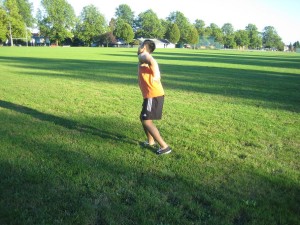It is important to note that the spine is divided into three parts – cervical which is the neck region, thoracic which includes the upper back and the lumbar which covers the curved region up to the sacrum. There are several conditions as well as injuries that can instigate chronic upper and lower back pain.
Referred pain
An individual who is in pain might perceive the back as the source of pain but in reality, it is another part of the body that causes it. Always bear in mind that this type of pain is called as referred pain. Lower back pain can occur if the aorta which is the biggest artery in the body ends up torn or bulges. Even a piercing peptic ulcer can also trigger referred pain at the back.

Compression fracture
Once two vertebrae are compressed together, it can cause one or both to become fractured. This typically occurs among individuals who have brittle bones which is distinctive of osteoporosis. Take note that this condition develop when the individual sustains shock from above as well as falls in which the feet lands first. Understandably, the spine will absorb the impact in such instances. You can take up a course on first so that you know what to do is injuries to the spine are suspected.
Osteoarthritis
Osteoarthritis is a condition that leads to the narrowing of the space between the bones of the spine as the cartilage starts to deteriorate. Once the nearby nerves become compressed, it results to pain. If the condition affects the spine, it can also lead to spondylosis. The changes in the spinal joints can become permanent resulting to the constriction of the disk space as well as the progressive weakness of the vertebrae. The symptoms of the condition do not manifest right away but once the nerve ends up compressed, thus pain can occur.
Thoracic outlet syndrome
Thoracic outlet syndrome occurs once the nerves and blood vessels are compressed between the muscle groups that move the shoulders and arms. Aside from the back pain, the individual can also feel tingling and numbness in the upper extremities, swelling and weakness. The exact cause of the nerve compression can be traced back to poor posture as well as old age, scar tissue and overdevelopment of the chest muscles.
Herniated disk
The disk between every vertebrae functions as a cushion that keeps the bones from rubbing against each other as well as keeping the nerves in the vertebral space. In case the disk moves or bulges out of place, it will press against the nerve that runs in that region, resulting to discomfort.
Rheumatoid arthritis
Rheumatoid arthritis typically affects the connective tissue that surrounds the joints. The structures become inflamed that will lead to stiffness. In some cases, the condition ankylosing spondylitis can develop which causes the vertebrae to fuse together, disrupting the mobility of the individual on the affected side. The ligament that supports the spine in place become slack, thus the vertebrae slides out of place. Once this occurs, there is possibility of compressing the spinal cord.
